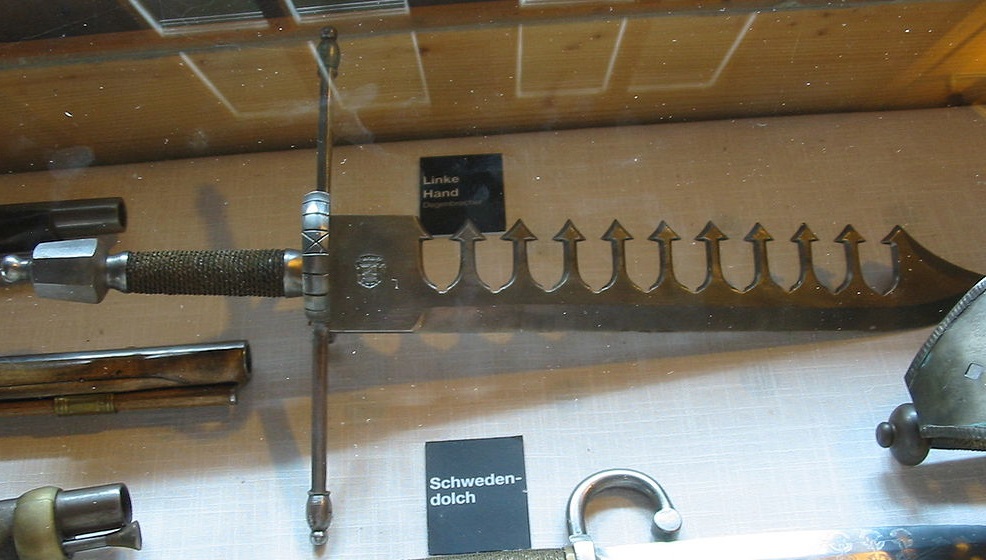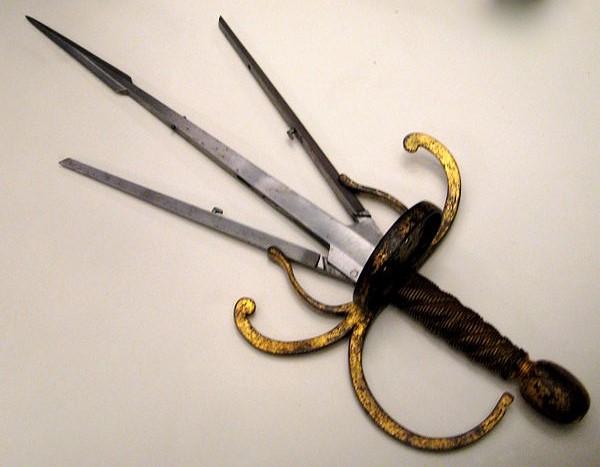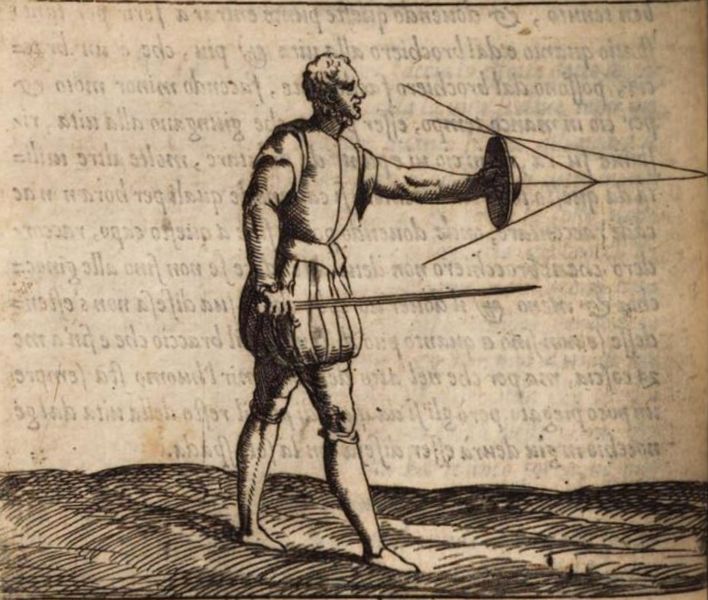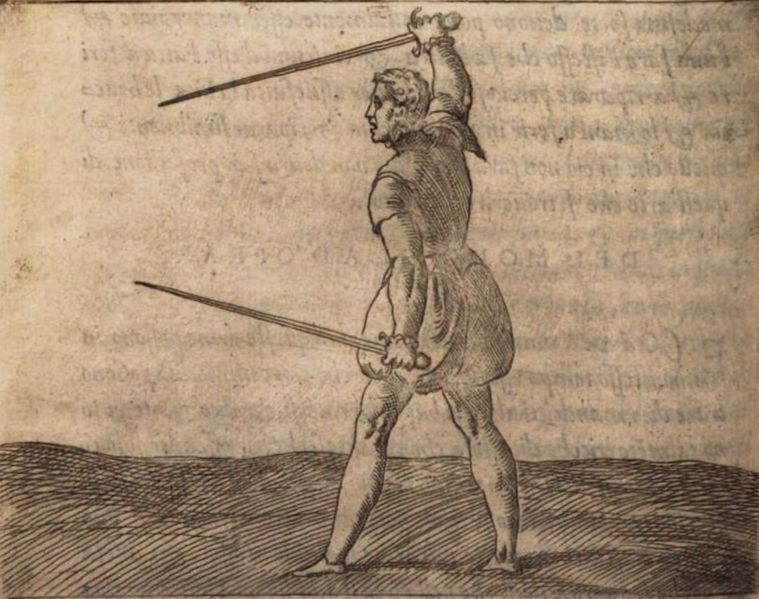There are also used now adays, as well in the schools, as in the lists, two Swords or Rapiers, admitted, and approved both of Princes, and of the professors of this art, for honorable and knightly weapons, albeit they be not used in the wars.-Master Giacomo di Grassi, His True Arte of Defence (1594)
According to the manuals written by masters such as de Agrippa, di Grassi and Marozzo, many combinations were used: sword and dagger, sword and gauntlet, dagger and cloak etc. Some weapons were even developed to be used with a sword. For example:
- Sword-Breaker Dagger
It has deep serrations where the user seeks to trap the adversary's blade, stopping him from using it, disarming him and, through luck or skill, break the blade. It has a similar purpose to the japanese sai used by characters such as Raphael from the Ninja Turtles. But one can simply see the weapon to perceive its purpose. If we want to surprise the enemy, how about...
- Trident Dagger
It is a deceitful weapon. It seems like a normal dagger, but one must merely push a button to activate a spring mechanism, suddenly exhibiting two extensions that might lock the enemy weapon. Just imagine, you think you were able to pass your blade just beneath the dagger of your opponent, just to hear a click and think: why can't I move my sword? And in this moment of distraction a rapier becomes intimate with your liver.
- Buckler
I know what some of you might think: wait. That's a shield, and I couldn't even use it to hit someone in D&D third edition. I answer with something written by di Grassi: "...giving to every man to understand that the Buckler and other weapons (which are said to be weapons only of warding) may also be of striking, as I will declare in his proper place." In reality, the buckler is a small shield which you hold with your hand and in no other way.
While technically a shield, it is much more mobile, an active protection while other shields are more passive. The I.33 manuscript shows the buckler following and protecting the sword arm; in the style taught by di Grassi, the buckler doesn't wait for the enemy hit, but meets it in the middle, deflecting the future attack before it hits the target. And due to being a light handheld shield, it is excellent to punch someone.
Di Grassi recommends that it be used with the extended arm, far away from your body so that it blocks your view as little as possible while hiding the most of your body from the enemy's point of view, as seen in the image above. He also recommends bucklers with spikes in the center, to stab when the opportunity comes. How about checking if your GM accepts the rogue using this "weapon"?
Ok, that's nice, but you started the article with a guy talking about two swords. Where are they?
- Two swords
Yes, there were europeans which fought like that. These swordsmen were rare because, while handling a sword demands a certain amount of training, dual wielding demands three or four times more: one has to learn with one hand, then train the other until it is as good as the first, and finally learn to use both in a way that one sword doesn't disturb the other.
The master di Grassi warns that this style should be used only in duels and tourneys, not in wars, because dual swording demands a level of concentration that harms the group coordination which differentiates an army from a bunch of warriors. It seems to me that only a fantastic warrior would be able to dual wield two focuses as well as two swords, be it a player character or a two-headed creature, like a bicephalous ogre which is the general and the army champion at the same time.
Another precaution is that one must face enemies with little to no armor. A single sword used with both hands has the power and precision necessary to find the joints and weak spots in an armor, be it a full plate or a gambeson. Once again, nothing that will stop someone which faces giant spiders with a sigh.
So, what's the advantage?
Everything done with the right hand can be done with the left, specially when it comes to having greater reach than with other secondary weapons. Attack and defense may come from the same hand in alternate moments, confusing the opponent. A swordsman already has difficulties facing a left-handed foe. An enemy with two equal swords is like facing the left-handed and the right-handed at the same time, but you're never sure which one of them will perform the true strike.
Besides, the extreme difficulty in mastering the handling of two swords ensures that one has a prominent place in any tourney, but no one here is interested in drawing attention and to amaze the local public, right? 
Note: in it isn't clear, this article is limited to european practises and techniques. There were similar eastern practises, but I didn't include them because I wouldn't be able to show to same level of current practical reconstruction and historical basis.
Bibliography:






Congratulations on your article.
ResponderExcluirOne of the elements you omitted that might be worthy of consideration is body position - most fighters, fencers martial artists (I can't claim much expertise but I have done both) angle their bodies to their opponents - there are a number of tactical and mechanical reasons for this - if you angle your body one of the weapons is out of range (it has to make up the width of your body to provide either offense of defense OR you alter your body position to deploy both weapons which means you lose the advantages that come from angling the body. Sure some people might make that choice, but to you original point, to do so effectively requires a rare level of expertise.
Thank you. I wouldn't know what to write on this, it is far beyond my knowledge.
Excluir